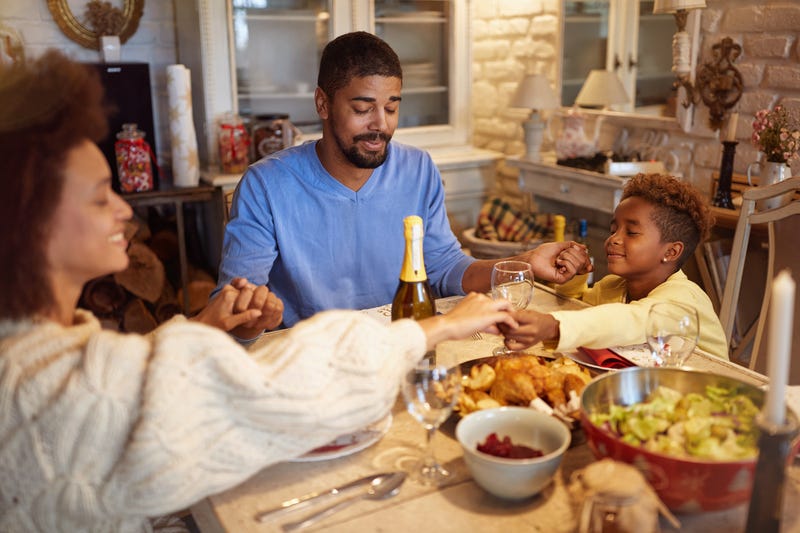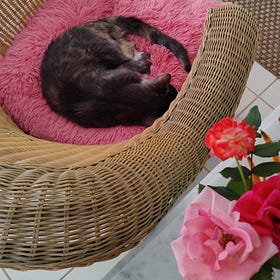Intro to My Ritual Inventory
The restoration of meaningful ritual as the key to moderation and the quality of life...
“Focus on what you have, not on what you don’t have. Make a list of ten things you are grateful for in your life and read the list aloud. Then read it each morning for the next thirty days. If you don’t appreciate what you’ve got, you won’t get anymore and you don’t need anymore.“ – T. Harv Eker
We cannot change the things we cannot see. Like The Centrifugal Map and The Communications Impact Ladder, My Ritual Inventory —first imagined and created back in 1996 — was designed to render the invisible visible. It facilitates the step-by-step restoration of meaningful ritual in our lives as the key to moderation: statistically the only viable antidote to state-sponsored default addiction — and the best way to restore the quality of life for you, your family, and your community. Simply stated…
Rituals are the arbiters of time and quality.
The loss of quality in our lives is directly proportionate to the loss of meaning and purpose, and the loss of meaning and purpose is directly related to the sudden or gradual loss of meaningful ritual — those rituals that promote and protect our spiritual, social, emotional, and physical wellbeing.
When, for instance, we mourn the loss of loved ones, we typically ritualize our grief with memorial services and funerals. Among the things we mourn is the loss of the meaningful rituals associated with the loved ones now gone. We mourn the loss of the quality time and attention we lavish on the meaningful rituals that singly and collectively characterize the unique aromas and flavors and textures and laughter and tears and obligations of relationships now consigned suddenly to memory. When we mourn the loss of meaningful ritual, we mourn the loss of quality in our lives.
Sometimes the loss of meaning and purpose unfurls slowly over time, over years or even — in the case of Western democracies like America — over generations. We lose direction and meaning when the relationships in our lives break down, and the breakdown begins with the erosion or destruction of the meaningful rituals that preserve and protect the relationships that define the quality of life for ourselves, our families, and our communities.
Those of us old enough to remember what life was like when just two such meaningful rituals — the family dinner table and the Sabbath day of rest — were still the spiritual and social rules rather than the exceptions can testify to the immense loss of quality, meaning, and social cohesion suffered in their absence…
Rituals are the roadmaps of our lives…
Consider that all of our time is spent in relationships with other people and things: family, friends, lovers, work, hobbies, worship, community, our bodies, art, our obsessions and addictions, etc. Each relationship in our lives will contribute to or detract from one or more of four basic needs: spiritual, social, emotional, and physical.
Consider also that the rituals we build around each of the relationships in our lives dictate precisely how, where and with whom we spend our time and money — and how, where, and with whom we invest our faith. Those relationships we value most will receive the lion’s share of resources courtesy of the rituals we build around each of them. Those we value less will — eventually — be consigned to table scraps or utter neglect.
The rituals in our lives arbitrage the satisfaction of our four basic needs1 — spiritual, social, emotional and physical — by simple virtue of the fact that they dictate how, where, and with whom we spend almost every waking minute of every day, from when we open our eyes in the morning until we close them again at night. Breakfast, lunch and dinner — all are ritualized. Entertainment and social gatherings, worship and reverence, work, holidays, and vacations — all managed and choreographed by an intricate and easily disturbed ritual ecosystem.
We unfold and consult our rituals like roadmaps many times each day as we navigate the relationships that weave the fabric of our daily lives. They also change as the things we assign value to — the relationships we deem worthy of our time and resources — change over the years with circumstance and intent.
The meaningful rituals in our lives operate as our spiritual, social, emotional and physical auto-immune systems.
Just as we are subject to opportunistic pathologies when our physical auto-immune systems are compromised, the loss of meaningful ritual in our lives exposes us to opportunistic pathologies like social isolation, emotional pain and despair, institutional nihilism, degenerative disease — and addiction.2
And just as we build meaningful rituals to promote and protect our four basic needs, we also build mindless rituals to promote our obsessions and addictions…
We become addicts as the mindless rituals of our obsessions and addictions replace and supplant the meaningful rituals that defend the quality of our lives.3
If our obsessions and addictions don’t plateau or recede on their own over time, if they are not otherwise modified or reversed, they will eventually overwhelm our lives and threaten to destroy our spiritual, social, emotional and physical wellbeing on all levels: as individuals, as families, as communities, and as a nation.
Moderation is the only statistically viable antidote to state-sponsored default addiction.
The ancient Vedic Seer observation that we become our attention explains in no small measure my fixation on meaningful ritual. It is essential that we reinstate meaningful ritual in our lives in order to claw back the inordinate time, attention, and resources currently devoted to the mindless rituals of our obsessions and our addictions in what I call the Great Age of Addiction.
In the end, almost all addiction recovery programs seek to reverse engineer the addictions themselves. Just as the process of addiction replaces the meaningful rituals in our lives with the mindless rituals of our obsessive compulsive behaviors and addictions, the process of recovery does the opposite: Recovery replaces the mindless rituals of our obsessive compulsive behaviors and addictions over time with meaningful rituals that moderate our lifestyles. Meaningful rituals reinforce and protect our spiritual, social, emotional and physical wellbeing. They reinforce and protect us, our families, and our communities. That’s why eight of the Ten Commandments tell us what not to do to ourselves and others, and why the Bill of Rights tells the government what it can’t do to us. Both documents were designed to moderate our behavior.
Accordingly, the true objective of addiction recovery — despite what we’ve been told our entire lives by severely conflicted recovery and medical industry experts — is not abstention. The true objective of addiction recovery is moderation…
Moderation is a natural byproduct of sufficient meaningful ritual in our lives.
By contrast, abstention, like addiction, is just another form of extreme behavior in the absence of sufficient meaningful ritual, in the absence of moderation.
Of course, no one ever got rich by selling less, so there is no corresponding industry to tout the benefits of moderation. Clearly, the only way to defeat state-imposed default addiction is to take personal responsibility for the quality of our own lives — the manifest intent of My Ritual Inventory and the Quality of Life Resistance Movement.
My Ritual Inventory will show you precisely how to assess and reintroduce meaningful ritual in your life — gradually and gently — as the antidote to state-sponsored default addiction when you use it just once every three months. Do so and you’ll find that My Ritual Inventory will become among the most powerful tools you will ever invoke to improve the spiritual, social, emotional, and physical quality of life for yourself, your family, and your community.
Gratitude is the true source of all healing and grace…
For an added — but purely optional — bonus, spend just three minutes with My Ritual Inventory first thing each morning and turn your day into a gratitude engine.
Now that you know the whys of this elegant and powerful tool, it’s time to learn the wherefores: go now to How to Use My Ritual Inventory!
[Want to invite Jeff Einstein to speak at your next event? Or want to license the Quality of Life Toolkit for your parents group, school, congregation, public agency, corporation or association? Contact us at moreinfo@qolrm.com.]
See…
The Quality of Life Essentials
RESOLVED… The quality of life is a reflection of how, where, and with whom we invest our faith, our time, and our money… THE FOUR BASIC NEEDS The quality of our lives reflects the extent to which we satisfy our four basic needs: spiritual, social, emotional, and physical. Let’s examine each of them b…
See…
The Truth About Addiction
“Every form of addiction is bad, no matter whether the narcotic be alcohol or morphine or idealism.” — Carl Jung Turns out that nothing we've been taught about addiction is true. I first began to write and speak about the rise of a pernicious meta-addiction to all things media and all things digital back in the spring of 2004. Addiction in the 21st centu…
See…
The Addiction Algorithm
Our lives in the digital 21st century are ruled by tens of thousands of digital algorithms. But here’s the one that matters most: Chemical destiny minus meaningful ritual = addiction. Here’s how it works, step by step: We are wired for addiction by virtue of the simple fact that our brains are chemically motivated …






